Wow! Stockholm has to be one of the best and most entrancing places I’ve visited on this trip.
It’s a visibly multi-ethnic city,that is immediately evident, perhaps on a par with London.I mention this only as a point of interest, because I have just travelled through Eastern Europe where the countries (at least visibly)are ethnically homogenous. As an example the population of Poland, ironically, following exterminations and forced migrations during and after WW2,is almost 100% Polish. Other countries such as the Baltics do have a mix of ethnic Baltic races, and Russians , which my unfamiliar eye couldn't differentiate between . Of course this mix brings its own local political issues. Countries such as Slovakia, Hungary, and Romania do of course have their own regional ethnic minorities ,which again brings tensions(for example Hungarians have been badly treated in the past in the Czech Republic and Slovakia) but these are all are uniformly "white" ethnic groups. An inter-continental multi-ethnic mix such as is evident in Stockholm brings a rather different and much more visible cultural richness, and perhaps different tensions.
A five minute walk from the campsite brought me to a tube station, and I was able to get off without a change at the central island, the oldest part of Stockholm, Gamla Stan. One difference with London, however, was immediately obvious as there were spare seats on the tube train all the way into the city centre at 8-45 on a Friday morning.
It’s a visibly multi-ethnic city,that is immediately evident, perhaps on a par with London.I mention this only as a point of interest, because I have just travelled through Eastern Europe where the countries (at least visibly)are ethnically homogenous. As an example the population of Poland, ironically, following exterminations and forced migrations during and after WW2,is almost 100% Polish. Other countries such as the Baltics do have a mix of ethnic Baltic races, and Russians , which my unfamiliar eye couldn't differentiate between . Of course this mix brings its own local political issues. Countries such as Slovakia, Hungary, and Romania do of course have their own regional ethnic minorities ,which again brings tensions(for example Hungarians have been badly treated in the past in the Czech Republic and Slovakia) but these are all are uniformly "white" ethnic groups. An inter-continental multi-ethnic mix such as is evident in Stockholm brings a rather different and much more visible cultural richness, and perhaps different tensions.
A five minute walk from the campsite brought me to a tube station, and I was able to get off without a change at the central island, the oldest part of Stockholm, Gamla Stan. One difference with London, however, was immediately obvious as there were spare seats on the tube train all the way into the city centre at 8-45 on a Friday morning.
Emerging into Gamla Stan from the tube, it was clear that all the major sights were going to be walkable, but there were so many interesting possibilities that I was going to have to ration myself carefully. I was blessed by a beautiful sunny day,and first wandered the grid of narrow medieval streets on the island. Here there are hundreds of interesting shops and restaurants and all the streets really require spending time walking through. There are three major churches (kyrkan in Swedish-hence the Scottish word Kirk)and the Royal palace(Kungliga Slottet),the official residence of the King and Queen.As I walked past ,the Horse Guards were clattering by,I think rehearsing for a state parade, as several carriages with people in tweeds and riding hats(perhaps royal stand-ins)were in the procession. It is Swedish national day tomorrow ;perhaps that is the occasion.I saw that one cavalry squadron was 100% female.
The sentries on duty in their German-style pickelhaube helmets have a more energetic time than our UK equivalent, and have to march back and forth over a 10 yard route.They seem to be allowed, once back in their sentry boxes, to fidget and look around.
The sentries on duty in their German-style pickelhaube helmets have a more energetic time than our UK equivalent, and have to march back and forth over a 10 yard route.They seem to be allowed, once back in their sentry boxes, to fidget and look around.
The one thing I really didn’t want to miss was the Vasa, the royal flagship of King Gustav Adolf’s that foundered and sank on its maiden voyage in Stockholm harbour in 1628.It was built as a visible sign of the might of Sweden at a time when the country's empire was at its zenith and included what is now Norway,Denmark,Finland,and a large proportion of Poland. The ship sank due to design flaws:it was too tall, and narrow, without enough space for adequate rock ballast in the hold,and went over at the first vigorous gust of wind .
This was raised in 1961, almost wholly complete, and the experience gained in preservation techniques used here for the first time will have benefitted the later preserving of the Mary Rose in England.They are continually learning and are now having to re-do some of the preservation in a different way.Vasa is almost exactly midway in history between the Mary Rose (launched 1512, sank 1545) and HMS Victory (launched 1765).It is about midway in size too, but the ornate carving is much more excessive than that on the Victory.Like the Mary Rose, the artefacts and skeletons of the crew provide a window into the lives of varied classes of society at the time.
There are a number of other museums on the same island (Djurgarden) including the Abba Museum,which I had to resist a temptation to visit for sheer kitsch value.I did notice that the carpark I would have headed for if I’d had more time last night,did have about 20 campervans in it.This is along the waterfront of the street Strandvagen,just north of Djurgarden,if anyone Is thinking of visiting in a van.You could not be more central in Stockholm.The waterways are teeming with boats,probably many more boats than Venice.Several cruise liners were moored up right in the city centre but vanished among all the rest of the scenery and do not dominate the city.
There are a number of other museums on the same island (Djurgarden) including the Abba Museum,which I had to resist a temptation to visit for sheer kitsch value.I did notice that the carpark I would have headed for if I’d had more time last night,did have about 20 campervans in it.This is along the waterfront of the street Strandvagen,just north of Djurgarden,if anyone Is thinking of visiting in a van.You could not be more central in Stockholm.The waterways are teeming with boats,probably many more boats than Venice.Several cruise liners were moored up right in the city centre but vanished among all the rest of the scenery and do not dominate the city.
There was much much more that I could have looked at in central Stockholm but in the afternoon I decided to do something a little different and took a vintage steamboat from the City Hall to the other Royal palace in Stockholm, Drottningholm .It is the actual Royal residence (they live in one wing), and it is about an hour up the waterways out of the city centre and seems, from the boat at least, to be in the countryside. I suppose it is in a similar situation to Hampton Court in London, and is in a highly attractive spot right on the water.
It is a Baroque palace, built in the second half of the 17th century by Queen Regent Hedvig Eleanora. Together with the gardens, which include a sumptuous 18th Chinese pleasure palace, and Drottningholm’s 18th century Royal Theatre, it forms a Unesco world heritage site. A series of about 15 state rooms and Royal apartments are permanently open, as is the Chinese palace. The gardens include a formal Baroque area with parterres and fountains, and an informal English-style parkland.
I caught the boat back again and it was highly convenient as halfway back to the city I was able to get off at a jetty on the beach right below the campsite. If you want to catch a boat from this isolated little jetty on the wooded shore, you have to hoist a wooden semaphore signal to indicate that you want picking up.
It is a Baroque palace, built in the second half of the 17th century by Queen Regent Hedvig Eleanora. Together with the gardens, which include a sumptuous 18th Chinese pleasure palace, and Drottningholm’s 18th century Royal Theatre, it forms a Unesco world heritage site. A series of about 15 state rooms and Royal apartments are permanently open, as is the Chinese palace. The gardens include a formal Baroque area with parterres and fountains, and an informal English-style parkland.
I caught the boat back again and it was highly convenient as halfway back to the city I was able to get off at a jetty on the beach right below the campsite. If you want to catch a boat from this isolated little jetty on the wooded shore, you have to hoist a wooden semaphore signal to indicate that you want picking up.
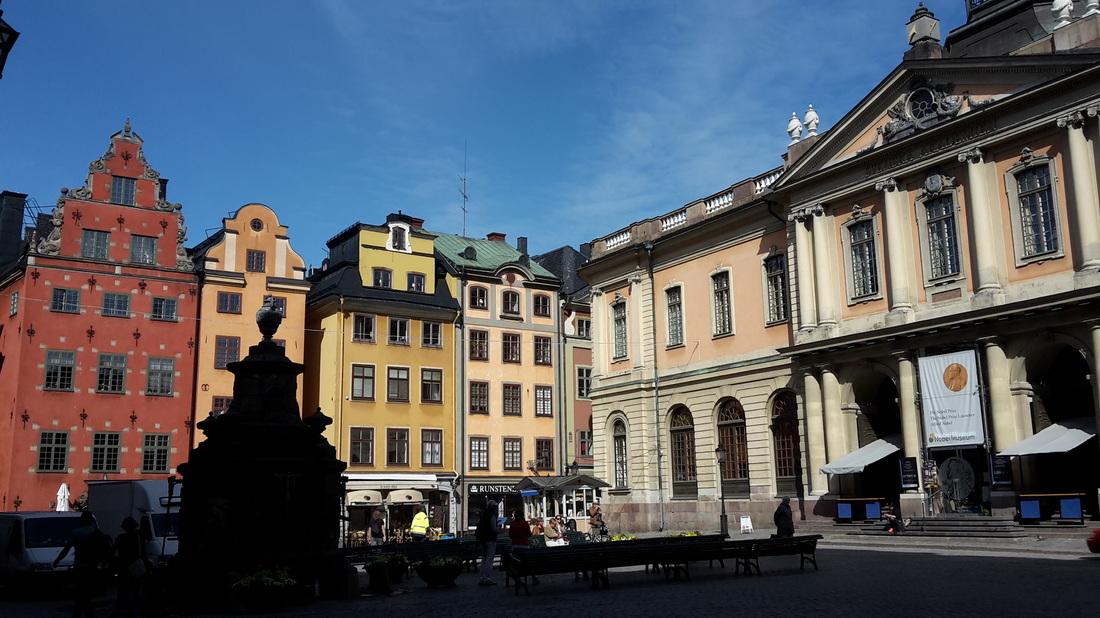
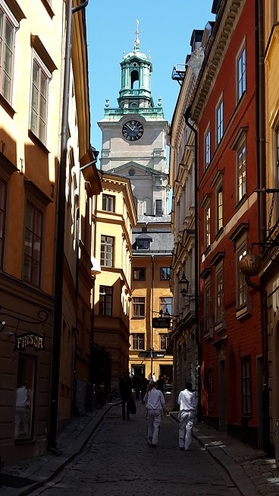
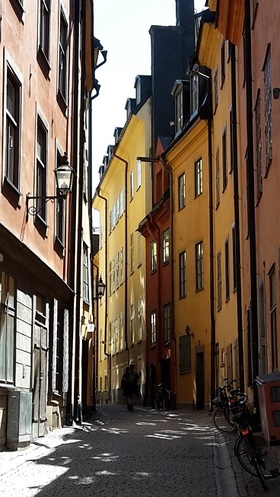
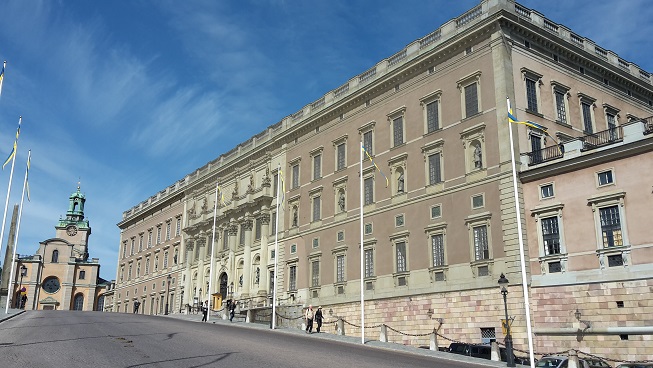

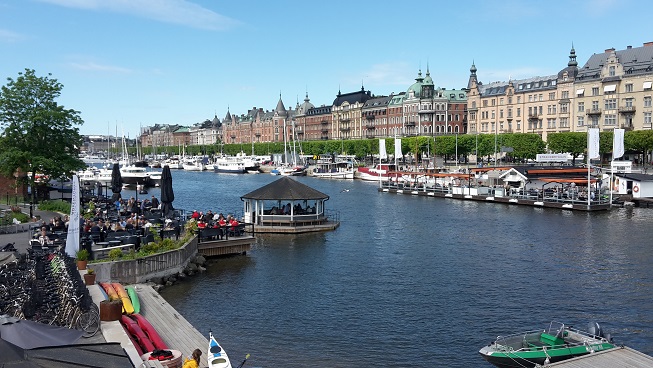
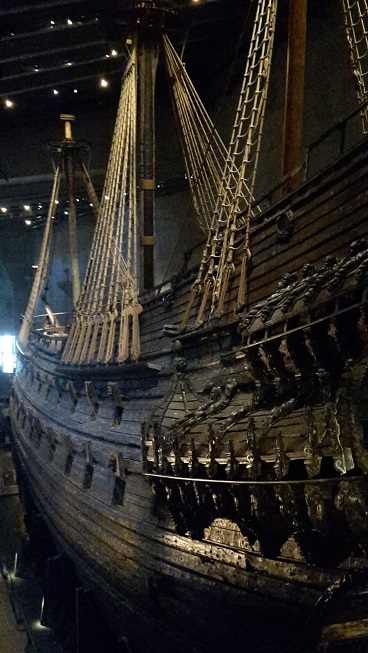
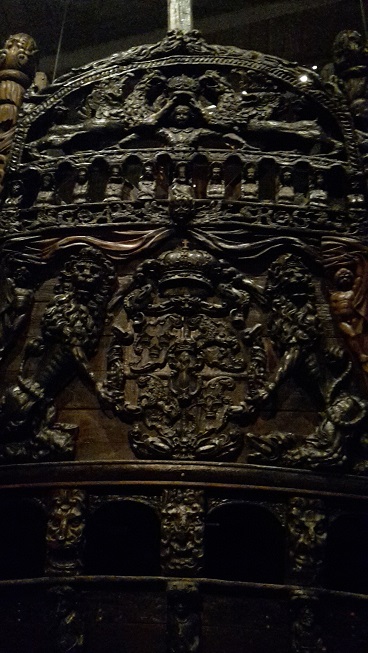

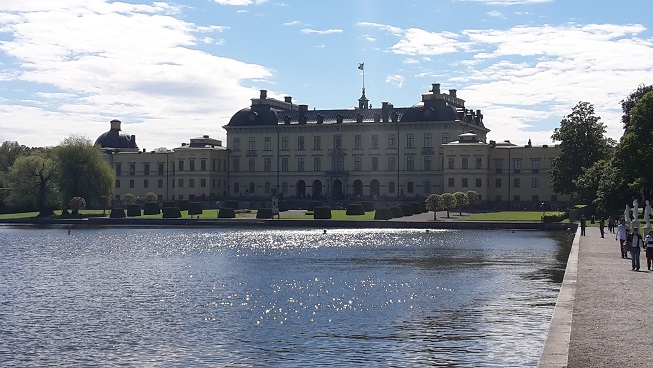
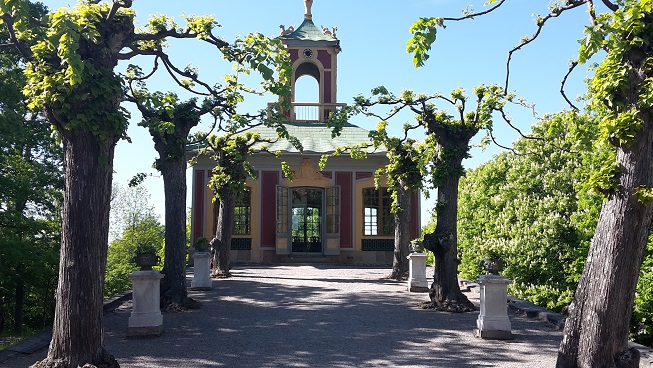
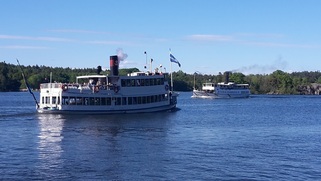

 RSS Feed
RSS Feed